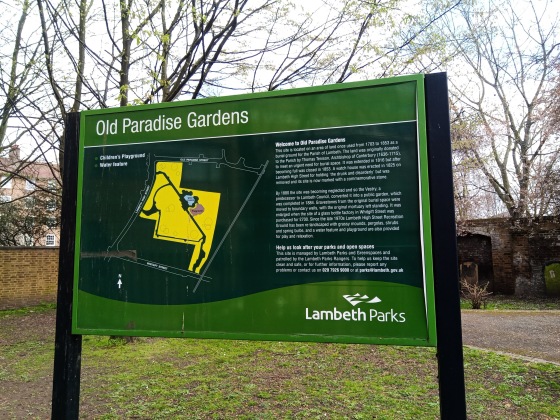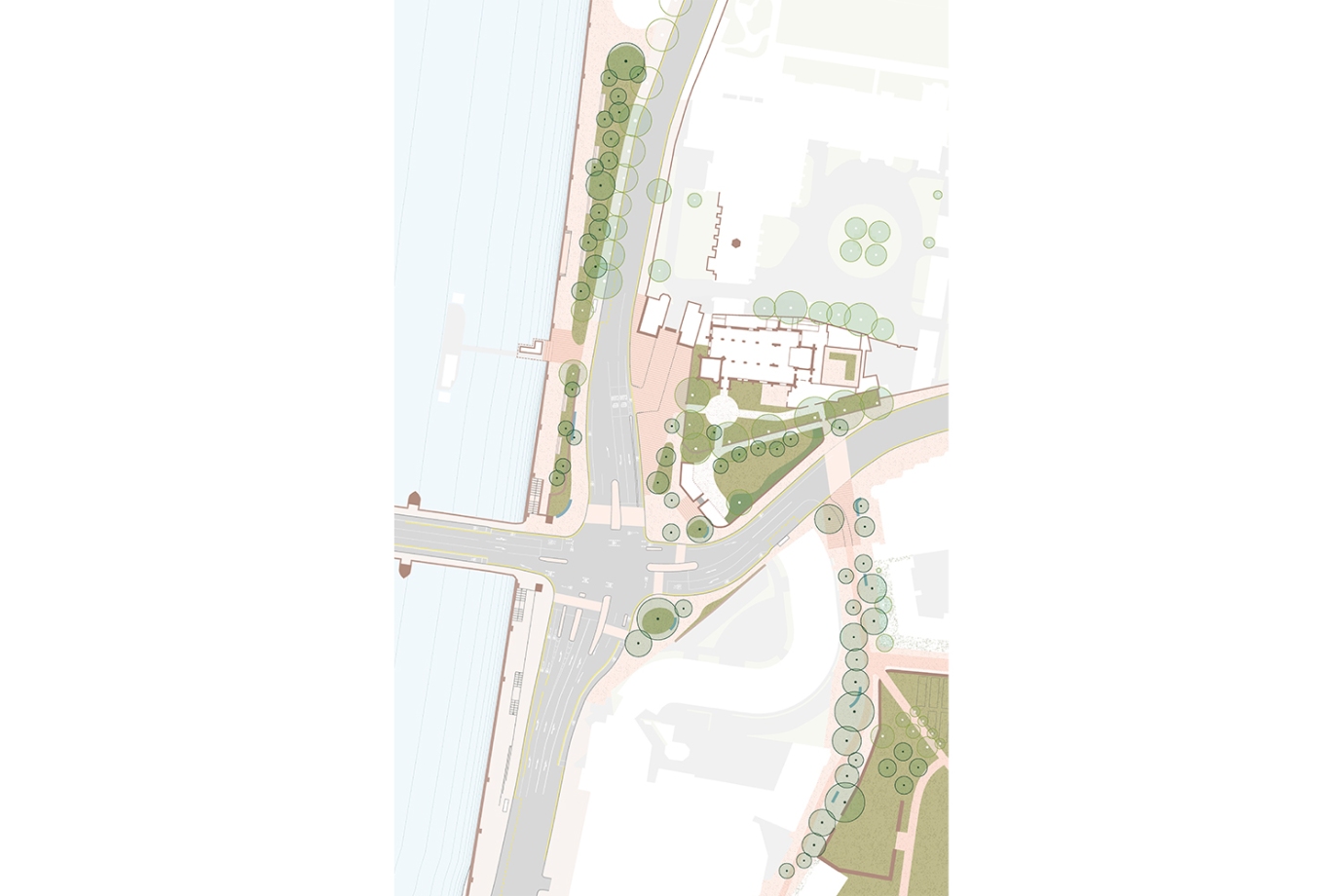It is perhaps one of the more unusual street names in Kennington, but its name gives a clue to its past and perhaps to its potential future.

Today the word ‘paradise’ conjures up fantastic holiday locations on tropical islands. In general, the word used in the modern sense refers to some idyllic place.
paradise (n.) late Old English, "the garden of Eden," from Old French paradis "paradise, garden of Eden" (11c.), from Late Latin paradisus "a park, an orchard; the garden of Eden, the abode of the blessed," from Greek paradeisos "a park; paradise, the garden of Eden," from an Iranian source similar to Avestan pairidaeza "enclosure, park" (Modern Persian and Arabic firdaus "garden, paradise"), a compound of pairi- "around" (from PIE root *per- (1) "forward," hence "in front of, near, against, around") + diz "to make, to form (a wall)." The first element is cognate with Greek peri "around, about" (see per), the second is from PIE root *dheigh- "to form, build." https://www.etymonline.com/word/paradise
In earlier times the word ‘paradise’ was often applied to a walled garden and it was sometimes used as an indirect reference to a royal property. In this case, the garden was the one linked to Norfolk House, a Tudor Mansion that once stood directly opposite Lambeth Palace.
This was the home of Agnes, Dowager Duchess of Norfolk and step-grandmother of Queen Katherine Howard, who lived at Norfolk House until she died in 1545.
Norfolk House was set in acres of garden and orchards where the young Katheryn Howard would have strolled.
This great house stood in 12 acres, surrounded by a wall and entered through an impressive gateway. Norfolk House itself stood where the Novotel Waterloo hotel is now and the Garden Museum opposite used to be the Howards’ local church.
Norfolk House and surrounding buildings and area were eventually sold to Margaret Parker, wife of Archbishop Parker and pass to her son in 1570. The house was completely demolished before 1786. See my article here
Old Paradise Street
Old Paradise Street was formed in the late 17th century on land which had formerly belonged to Norfolk House a Tudor Mansion. It used to be called
This street was formed in the late 17th century on land which had formerly belonged to Norfolk House. Numbers 2–18 formed part of the endowment left by Archbishop Tenison to the school for girls founded by him on the High Street. These properties were let in the 18th century by the school trustees, on a long lease, to Richard Summersell.
Summersell held the offices of bailiff of the manors of Kennington, Vauxhall, Lambeth and Walworth, surveyor of the Parish Roads and surveyor of Thrale’s Brewery. His daughter, Elizabeth Pillfold, widow of Alexander Pillfold, surrendered the lease when the land was required to enlarge the burial ground. Today we have a new social housing block, Pillford House, on Old Paradise Street.

Old Paradise Gardens

The site at Old Paradise Gardens is an area of land that is recorded as having been used from about 1703 to 1853 as a burial ground for the parish of Lambeth. According to several sources, it was donated to the parish by Thomas Tenison, Archbishop of Canterbury (1636-1715), and consecrated in about 1705 to meet the growing need for burial space. The burial ground is depicted on Richard Horwood’s map of London from 1792 to 1799, which shows it covering the southern part of the current site.

It was extended to the north in about 1815, essentially forming the current footprint, but after becoming full was closed in 1853.
By 1880 the former burial ground was ‘very unsightly’ and the Lambeth Vestry decided to turn it into a public garden, and this was completed in 1884. Gravestones were moved to boundary walls, the mortuary was left standing, as was a watch house that had been erected in 1825 on Lambeth High Street for holding ‘the drunk and disorderly. The latter has now gone but its site is marked with a stone.

The park was then known as Lambeth High Street Recreation Ground,
The new garden was conveyed to Lambeth Vestry and then to Lambeth Borough Council. Gravestones and chest tombs dating from the C18th and C19th remain attached to the former boundary wall. In 1929 the recreation ground was enlarged when the site of a glass bottle factory in Whitgift Street was purchased for £700.
By the late 1970s, the recreation ground had been largely asphalted over, but it has since been re-landscaped with grassy mounds, a water feature, shrubs and spring bulbs planted, and seating, pergolas and other features provided. In 2004 it was a recipient of Section 106 monies as part of Vauxhall Cross Development.
The boundary wall was listed at Grade II on 27 March 1981.
In 2013 the park was again refurbished, with new entrance gates erected on Old Paradise Street. When it was re-opened by local MP and supporter Kate Hoey, the park was renamed Old Paradise Gardens. See here
The Future
There are future plans for another upgrade of the park as part of the Garden Museum-led initiative known as Lambeth Green, which proposes to strengthen the link between St Mary’s Gardens (q.v.) and Old Paradise Gardens. Among proposals to improve the park’s viability is establishing a cut-flowers business, which would provide revenue for maintenance. See Dan Pearson’s Proposals Here

But these plans and the area is under the threat of two large tower blocks proposed as part of the redevelopment of the Fire Brigade HQ at Albert Embankment see here https://www.lambethvillage.co.uk/campaign/ and sign the Garden Museum’s Petition here
Katherine Howard Kennington’s Queen(Opens in a new browser tab)


















